Equipment
2020 Callaway Chrome Soft and Chrome Soft X golf balls
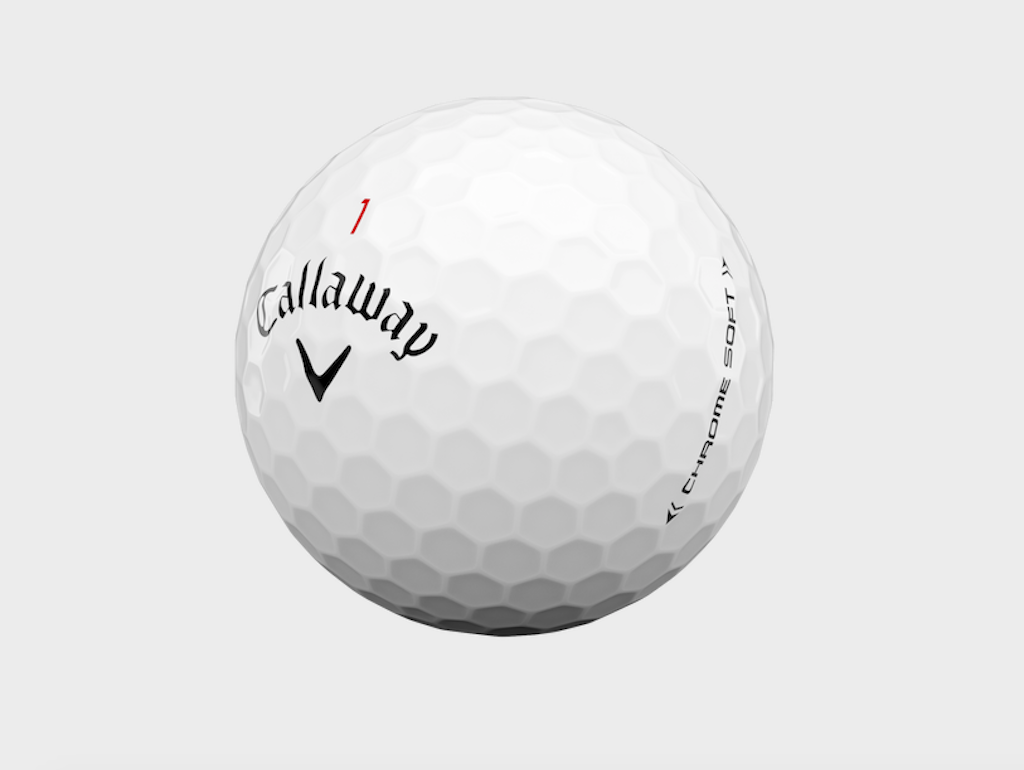
The Callaway Chrome Soft has been called “the ball that changed the ball,” and for 2020, Callaway is bringing more innovations to its premium line, making its flagship ball offering longer and more consistent than ever before with the new Chrome Soft and Chrome Soft X.
2020 Callaway Chrome Soft and Chrome Soft X golf balls
Golf balls are an expensive thing to manufacture, and to do it properly requires a lot of capital investment into specialized machines. When it comes to golf balls, there is a big difference between those who own their process start to finish, and those who simply call up a manufacturing facility overseas and order up tens of thousands of “white label premium” balls with their logos on them. Callaway firmly sits in the “own the process” camp!
As documented in a piece released around this time last year, Callaway has invested millions, and continues to invest a planned $50 million, in new equipment that improves the ball-making process. From start to finish, the engineers at Callaway are leaving no stone unturned to produce the best performing golf balls possible.
These investments in machinery include
- State-of-the-art rubber mixer: This giant mixer is a four-story tall machine built for absolute precision mixing batch after batch. It precisely measures chemical compounds and polymers needed to build each layer and also regulates temperature during the process to make sure the final product meets strict quality control measures.
- New core-molding tools: Balls are built from the core out, and without consistency, the rest of the pieces don’t quite matter as much. Even with automation already a huge part of the process, Callaway is adding more to not only help boost ever-growing demand but and quality core to core. Don’t think for a second that this means Callaway is replacing people with machines though, in fact, quite the contrary. Over the last four years, the number of employees at the Chicopee, Massachusetts, plant has almost doubled.
- New 3D X-Ray system: If for some reason a bad golf ball gets past the first steps of the quality control process without fault, the 3D X-Ray system will prevent it from going any further. As Callaway has stated “these machines can’t make the ball pieces more centered, but it prevents ones that aren’t from ever leaving the plant.
The new 2020 Callaway Chrome Soft
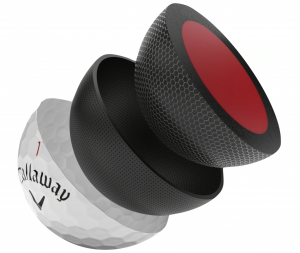
As we talked about off the top, golf balls are constructed from the core out, and with the new Chrome Soft, the inner core is 34 percent bigger than the previous model. This larger inner core helps create higher launch and lower spin and it also allows the secondary Graphene reinforced layer to be thinner and firmer, resulting in faster initial speeds and longer distance.
The issue with making a golf ball faster and longer is that, in general, it results in a golf ball that feels and sounds much more firm. This is a broad statement, but one that applies to a lot of balls available in the market today. But this is not just any golfball, it’s a Callaway Chrome Soft—”soft” is in the name. So, how do you make a faster golf ball feel softer? You totally redesign the mantle layer under the cover.
The high-speed mantle layer was built with a new proprietary ionomer blend to better transfer energy from the dual core to the mantle layer and help retain energy. This stiff layer around the core helps the ball with both distance off the tee and with irons, while also better improving spin consistency and RPM around the greens.
So, about that cover. The cover on the new 2020 Callaway Chrome Soft is 10 percent thinner than the previous model. This new more resilient cover and the material it’s made of does a number of things for golfers from a performance standpoint. The first is help the rest of the ball maintain energy and produce higher ball speeds. Second, it maintains the soft feel and short game spin performance people love and expect from a Chrome Soft Ball.
The Chrome Soft’s new dimple design utilizes the Callaway proprietary HEX dimple, optimizes flight with higher flatter trajectory for target player. This higher flight results in increased descent angle for golfers with slower swing speeds while not sacrificing performance for faster players. The end result is a ball that flies up to five yards farther.
Options, availability, and Price
Beyond the traditional markings, the Chrome Soft will be available with Truvis, Truvis Yellow, Triple Track alignment and Triple Track yellow. It will be available starting February 28th with a retail price of $47.99 a dozen.
The new 2020 Callaway Chrome Soft X
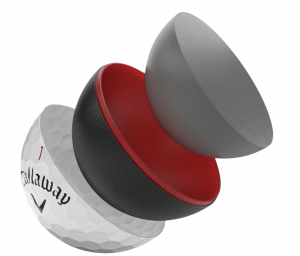
“Go big or go home” seems to be the theme of the new cores built into each Chrome Soft ball from Callaway. With the new Chrome Soft X, the large single core is now 117-percent larger (by volume) than the previous design. It’s comprised of higher MW (molecular weight) Neodymium rubber, which is also stronger and faster, resulting in (you guessed it) faster ball speeds.
Compared to the standard Chrome Soft Model, that is a dual core single mantle, the Chrome Soft X is single core dual mantle, which provides the ball with what Callaway has dubbed a “Jail Break” effect to help maintain more energy and faster ball speeds throughout the bag, not just with the driver. The dual mantle layer is built like this: a soft inner mantle provides a dampening effect to maintain the soft feel Chrome is known for, paired with a firm outer mantle to create ball speed while not having to sacrifice total short game performance.
If you thought 10 percent thinner on the Chrome Soft was good, the Chrome Soft X’s cover is 22 percent thinner than the previous generation.
The aerodynamics have been given an overhaul with the Chrome Soft X to reduce total drag at all speeds to increase potential carry distance and increase trajectory. This makes the new Chrome Soft X up to seven yards longer.
Options, availability, and price
The Chrome Soft X will be available in a standard graphics package along with Triple Track Alignment and Truvis Yellow. Like its Chrome Soft counterpart, the X will also be available starting March 12 with a retail price of $47.99 a dozen.
- LIKE39
- LEGIT7
- WOW5
- LOL4
- IDHT1
- FLOP4
- OB2
- SHANK15
Whats in the Bag
WITB Time Machine: Danny Willett’s winning WITB, 2016 Masters
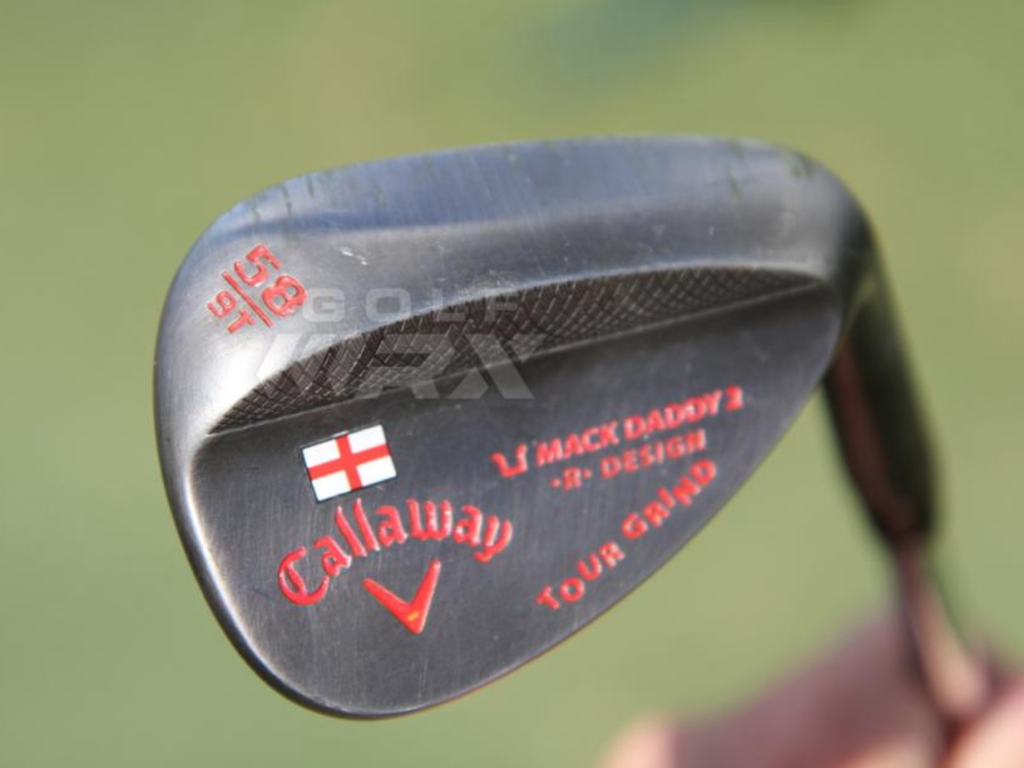
Driver: Callaway XR 16 (9 degrees)
Shaft: Mitsubishi Rayon Diamana W-Series 60 X
Length: 45.5 inches
3-wood: Callaway XR 16 (15 degrees)
Shaft: Mitsubishi Rayon Diamana W-Series 70X
5-wood: Callaway XR 16 (19 degrees)
Shaft: Mitsubishi Rayon Diamana W-Series 80X
Irons: Callaway Apex UT (2, 4), Callaway Apex Pro (5-9)
Shaft: True Temper Dynamic Gold X100 Superlite
Wedges: Callaway Mack Daddy 2 (47-11 S-Grind) Callaway Mack Daddy 2 Tour Grind (54-11, 58-9)
Shaft: True Temper Dynamic Gold X100 Superlite
Putter: Odyssey Versa #1 Wide (WBW)
Lie angle: 71 degrees
Ball: Callaway Speed Regime SR-3
Check out more photos of Willett’s equipment from 2016 here.
- LIKE2
- LEGIT0
- WOW1
- LOL0
- IDHT0
- FLOP0
- OB0
- SHANK0
Equipment
Project X Denali Blue, Black shaft Review – Club Junkie Review
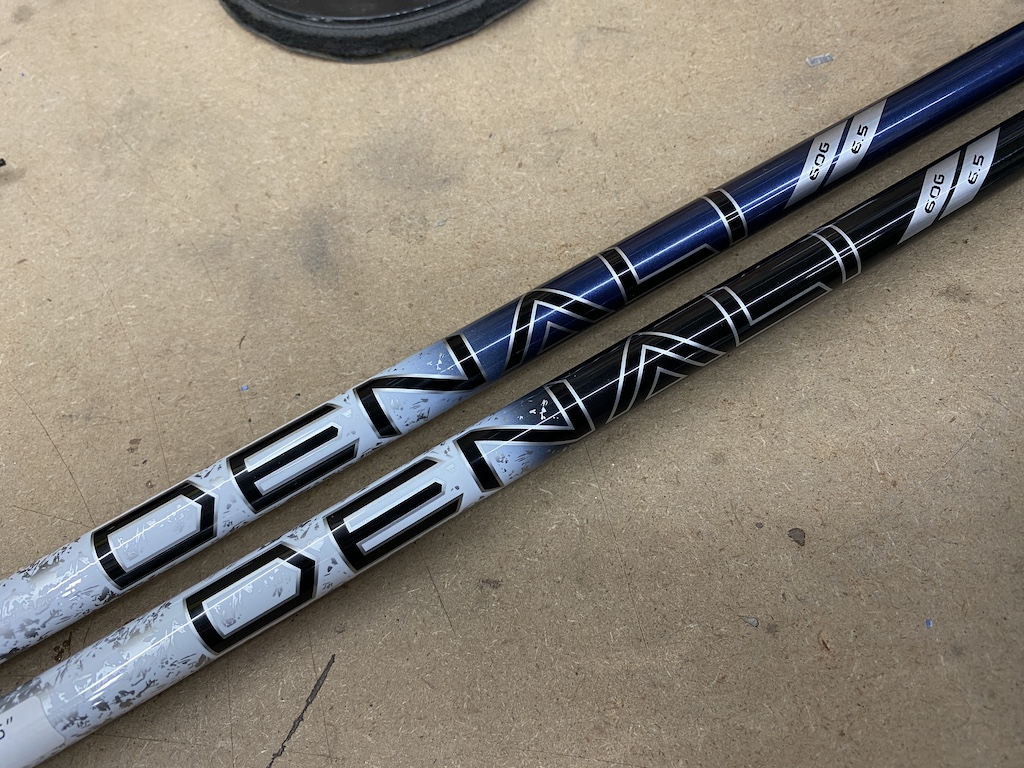
Originally, Project X was known for low-spin steel iron shafts. However, the company might now be known for wood shafts. Denali is the newest line of graphite shafts from Project X. With the Denali line, the company focuses on feel as well as performance.
There are two profiles in the Denali line, Blue and Black, to fit different launch windows. Denali Blue is the mid-launch and mid-spin profile for players who are looking for a little added launch and Denali Black is designed for low-launch and low-spin. Both models are going to offer you a smooth feel and accuracy.
For a full in-depth review check out the Club Junkie podcast on all podcast streaming platforms and on YouTube.
Project X Denali Blue
I typically fit better into mid-launch shafts, as I don’t hit a very high ball so the Denali Blue was the model I was more excited to try. Out of the box, the shaft looks great and from a distance, it is almost hard to tell the dark blue from the Denali Black. With a logo down install of the shaft, you don’t have anything to distract your eyes, just a clean look with the transition from the white and silver handle section to the dark navy mid and tip.
Out on the course, the Blue offers a very smooth feel that gives you a good kick at impact. The shaft loads easily and you can feel the slightly softer handle section compared to the HZRDUS lineup. This gives the shaft a really good feel of it loading on the transition to the downswing, and as your hands get to impact, the Denali Blue keeps going for a nice, strong kick.
Denali Blue is easy to square up at impact and even turn over to hit it straight or just little draws and most of the flex of the shaft feels like it happens right around where the paint changes from silver to blue. The Blue launches easily and produces what I consider a true mid-flight with the driver. While it is listed as mid-spin, I never noticed any type of rise in my drives. Drives that I didn’t hit perfectly were met with good stability and a ball that stayed online well.
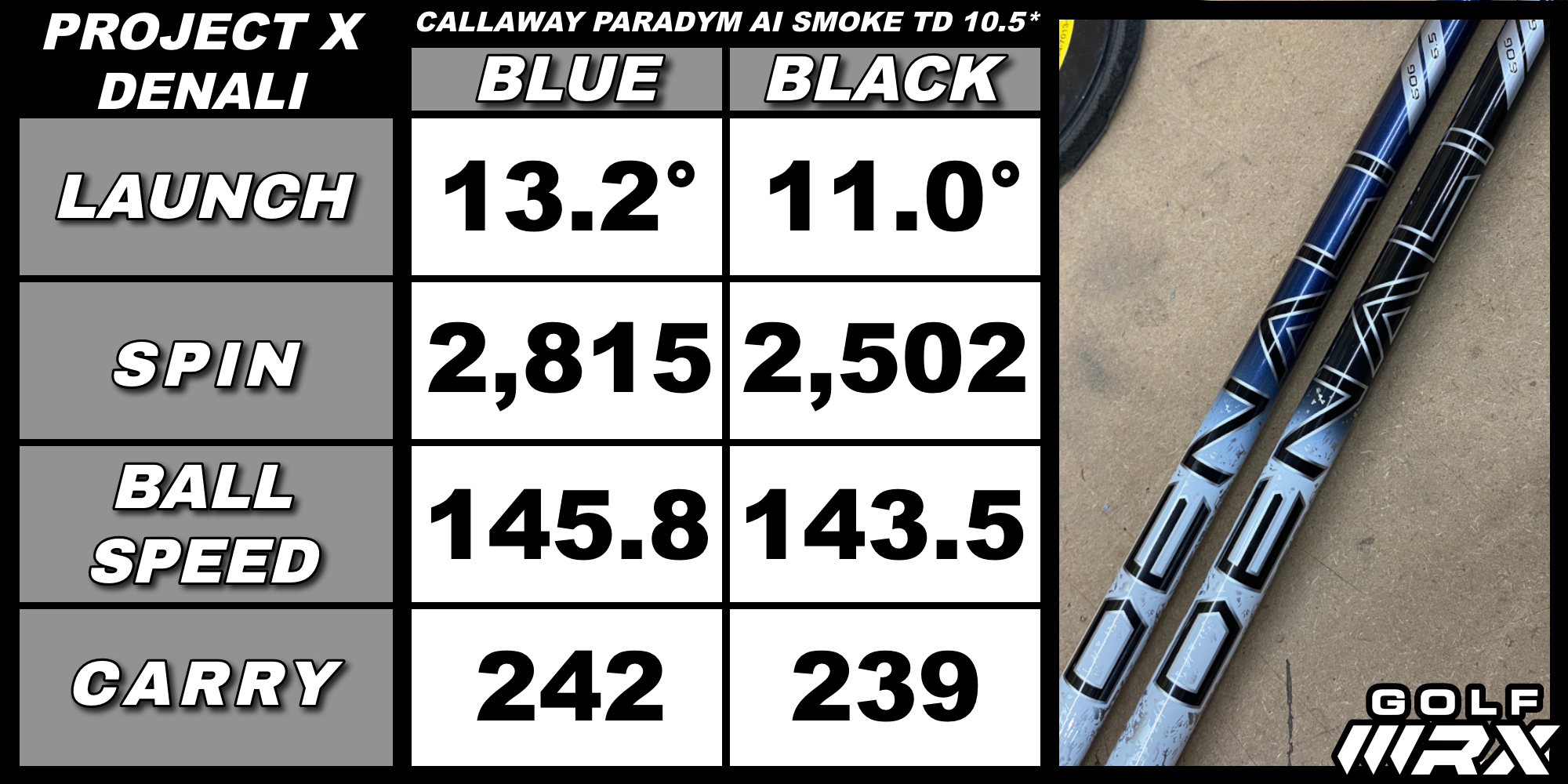
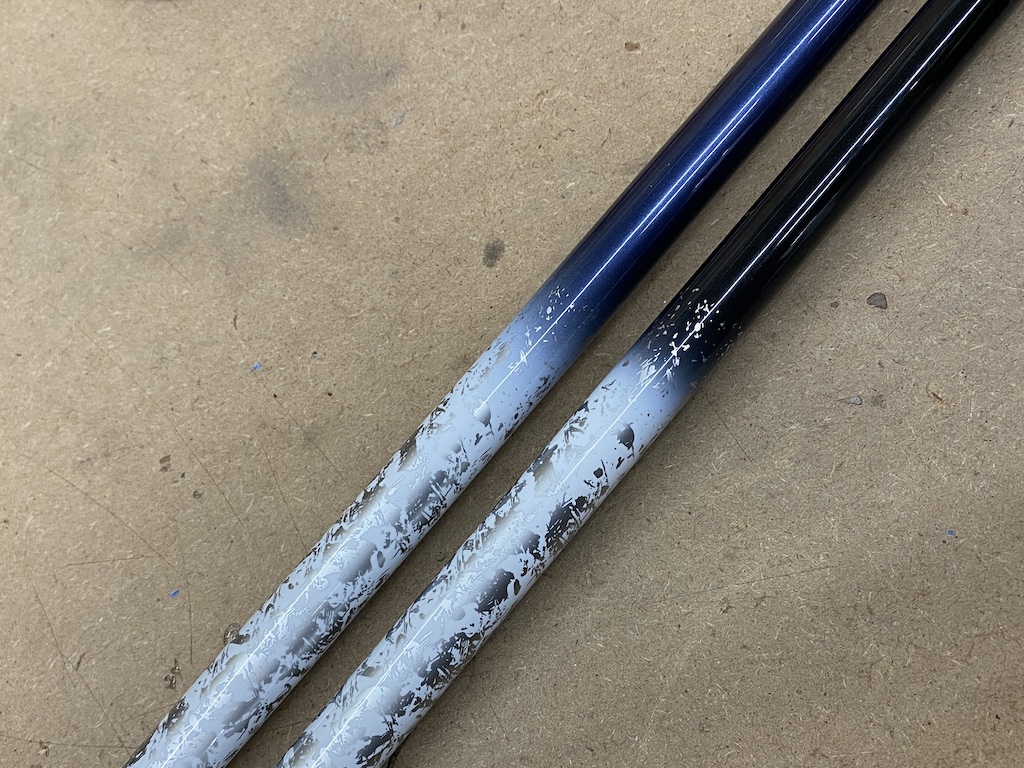
Project X Denali Black
When you hold the Denali Black in your hands you can tell it is a more stout shaft compared to its Blue sibling by just trying to bend it. While the handle feels close to the Blue in terms of stiffness, you can tell the tip is much stiffer when you swing it.
Denali Black definitely takes a little more power to load it but the shaft is still smooth and doesn’t give you any harsh vibrations. Where the Blue kicks hard at impact, the Black holds on a little and feels like keeps you in control even on swings that you try and put a little extra effort into. The stiff tip section also makes it a little harder to square up at impact and for some players could take away a little of the draw from their shot.
Launch is lower and more penetrating compared to the Blue and produces a boring, flat trajectory. Shots into the wind don’t rise or spin up, proving that the spin stays down. Like its mid-launch sibling, the Black is very stable and mishits and keeps the ball on a straighter line. Shots low off the face don’t get very high up in the air, but the low spin properties get the ball out there farther than you would expect. For being such a stout shaft, the feel is very good, and the Denali Black does keep harsh vibrations from your hands.
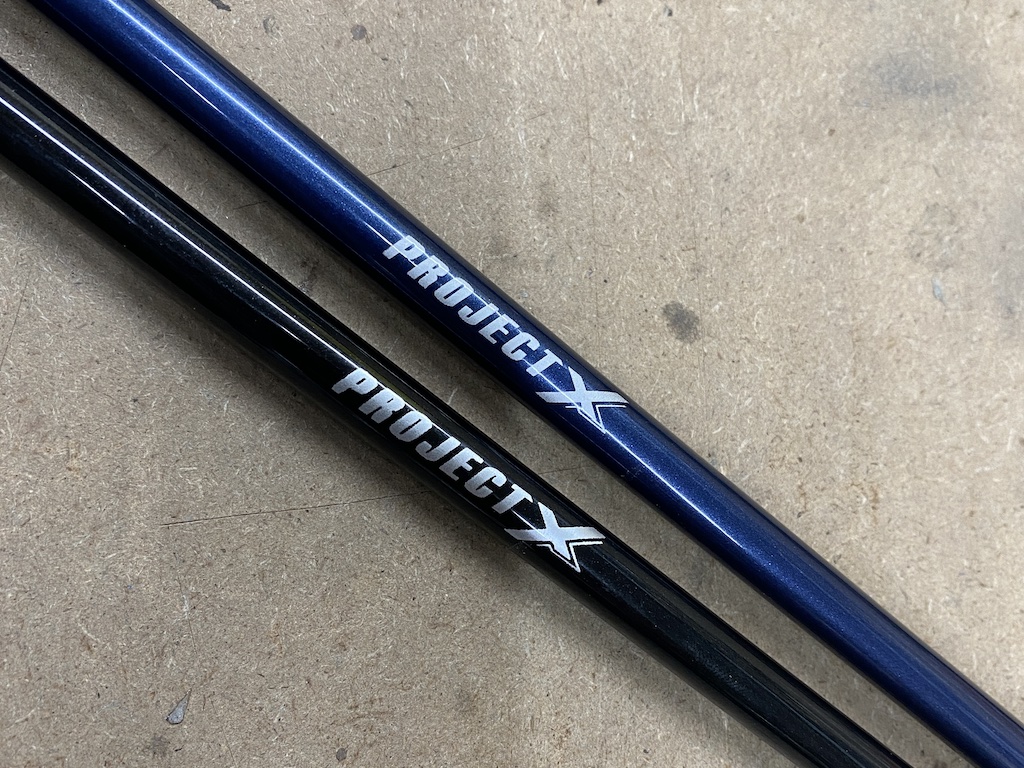
Overall the Project X Denali Blue and Black are great additions to the line of popular wood shafts. If you are looking for good feel and solid performance the Denali line is worth trying out with your swing. Choose Blue for mid-launch and mid-spin or Black for lower launch and low spin.
- LIKE1
- LEGIT1
- WOW1
- LOL0
- IDHT0
- FLOP0
- OB0
- SHANK0
Equipment
What we know about Bryson DeChambeau’s 3D-printed Avoda irons
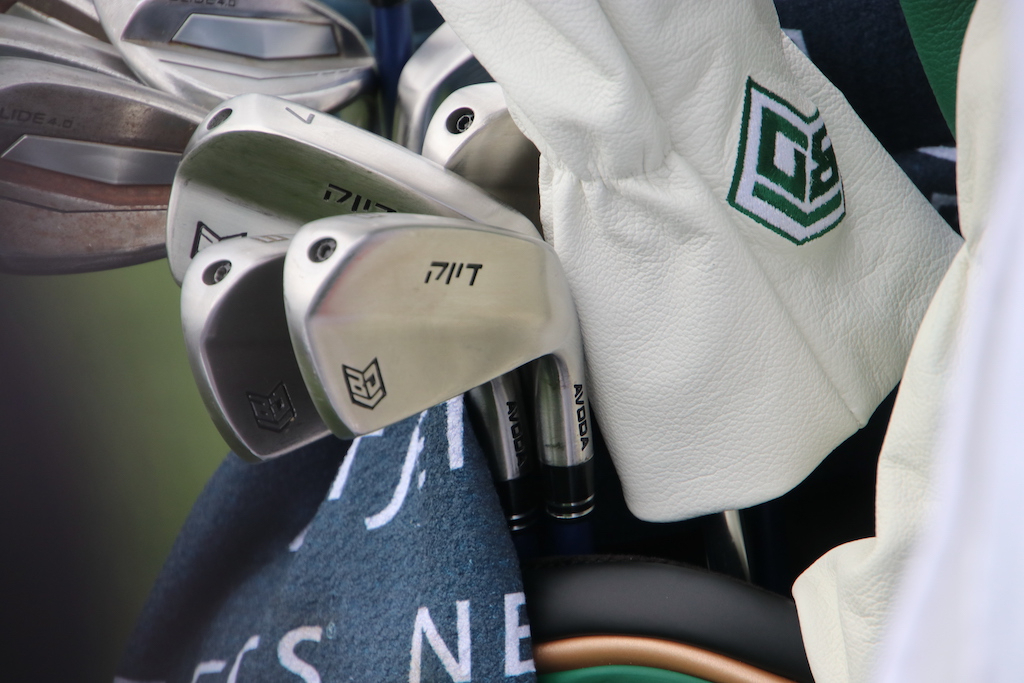
Bryson DeChambeau fired an opening-round 7-under 65 at Augusta National, hitting an impressive 15 of 18 greens in regulation in the process. Golf’s mad scientist’s play grabbed headlines and so too did his equipment. In place of the Ping i230 irons he had in the bag last week for LIV Golf’s Miami event, DeChambeau is gaming a prototype 5-PW set of irons from little-known direct-to-consumer manufacturer Avoda.
What is Avoda Golf?
Founded by Tom Bailey, also a Mike Schy student like Bryson DeChambeau, Avoda Golf is a direct-to-consumer golf equipment company that currently manufactures both single and variable-length irons in one model that are available for pre-order.
What irons is Bryson DeChambeau playing?
Per multiple reports, DeChambeau is playing a custom-designed set of single-length irons that incorporate bulge and roll into the face design. The two-piece 3D-printed irons were reportedly only approved for play by the USGA this week, according to Golfweek’s Adam Schupak.
Regarding the irons, DeChambeau told Golf Channel the irons’ performance on mishits was the determining factor in putting them in play this week. “When I mishit on the toe or the heel,” DeChambeau said. “It seems to fly a lot straighter for me and that’s what has allowed me to be more comfortable over the ball.”
What can we tell about the design of the clubs?
These days, it is a little hard to speculate on what is under the hood with so many hollow body irons. DeChambeau’s irons look to be hollow on the lower section as they do flare back a decent amount. That “muscle” on the back also looks to be fairly low on the iron head, but we can assume that is progressive through the set, moving up higher in the short irons.
A screw out on the toe is probably used to seal up the hollow cavity and used as a weight to dial in the swing weight of the club. From pictures, it is hard to tell but the sole looks to have a little curve from heel to toe while also having some sharper angles on them. A more boxy and sharper toe section looks to be the design that suits Bryson’s eye based on the irons he has gravitated toward recently.
What are bulge and roll, again?
Two types of curvature in a club face, traditionally incorporated only in wood design. Bulge is heel-toe curvature. Roll is crown-sole curvature. Both design elements are designed to mitigate gear effect on off-center strikes and produce shots that finish closer to the intended target line. (GolfTec has an excellent overview of bulge and roll with some handy GIFs for the visual learner)
What else is in DeChambeau’s bag?
Accompanying his traditional Sik putter, Bryson builds his set with a Ping Glide 4.0 wedges, a Krank Formula Fire driver and 5-wood, and a TaylorMade BRNR Mini Driver, all with LA Golf graphite shafts.
- LIKE71
- LEGIT22
- WOW16
- LOL7
- IDHT3
- FLOP2
- OB5
- SHANK10
-

 19th Hole3 days ago
19th Hole3 days agoDave Portnoy places monstrous outright bet for the 2024 Masters
-

 19th Hole3 weeks ago
19th Hole3 weeks agoJohn Daly stuns fans into silence with brutal opening tee shot on PGA Tour Champions
-

 19th Hole2 weeks ago
19th Hole2 weeks agoThings got heated at the Houston Open between Tony Finau and Alejandro Tosti. Here’s why
-

 19th Hole4 days ago
19th Hole4 days agoTiger Woods arrives at 2024 Masters equipped with a putter that may surprise you
-

 19th Hole1 week ago
19th Hole1 week agoReport: Tiger Woods has ‘eliminated sex’ in preparation for the 2024 Masters
-

 19th Hole3 weeks ago
19th Hole3 weeks agoCharlie Woods finds it tough going on American Junior Golf Association debut
-

 19th Hole2 weeks ago
19th Hole2 weeks agoAddiction, spinal fusion, and scam artists – Everything Anthony Kim revealed in candid interview with David Feherty
-

 19th Hole1 week ago
19th Hole1 week agoAnthony Kim says doctors told him that he ‘may not have much time left’ ahead of LIV return



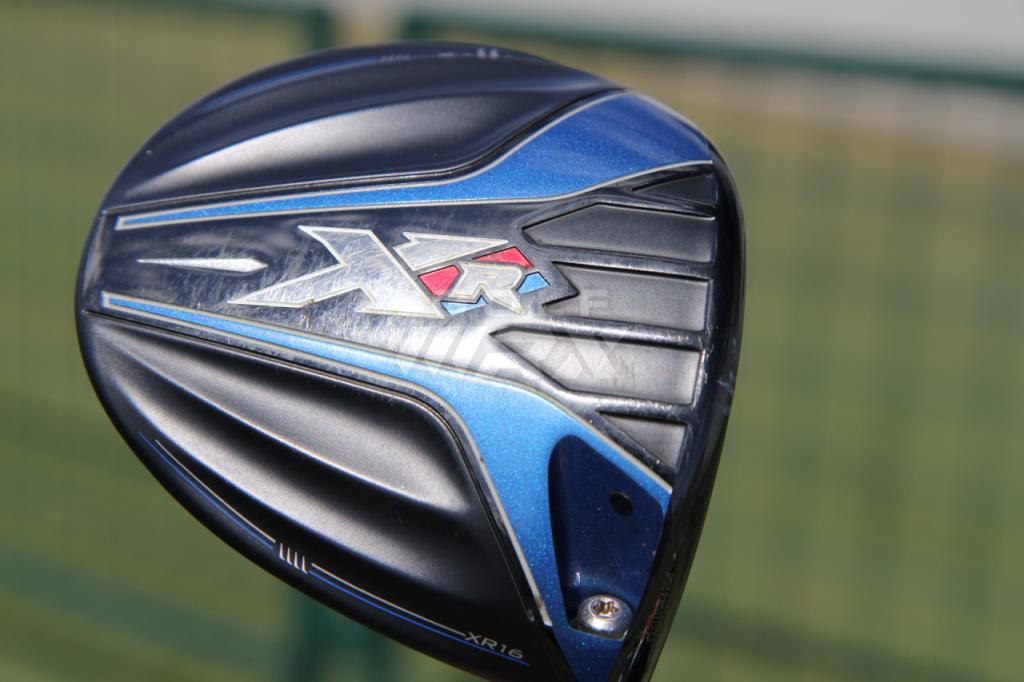
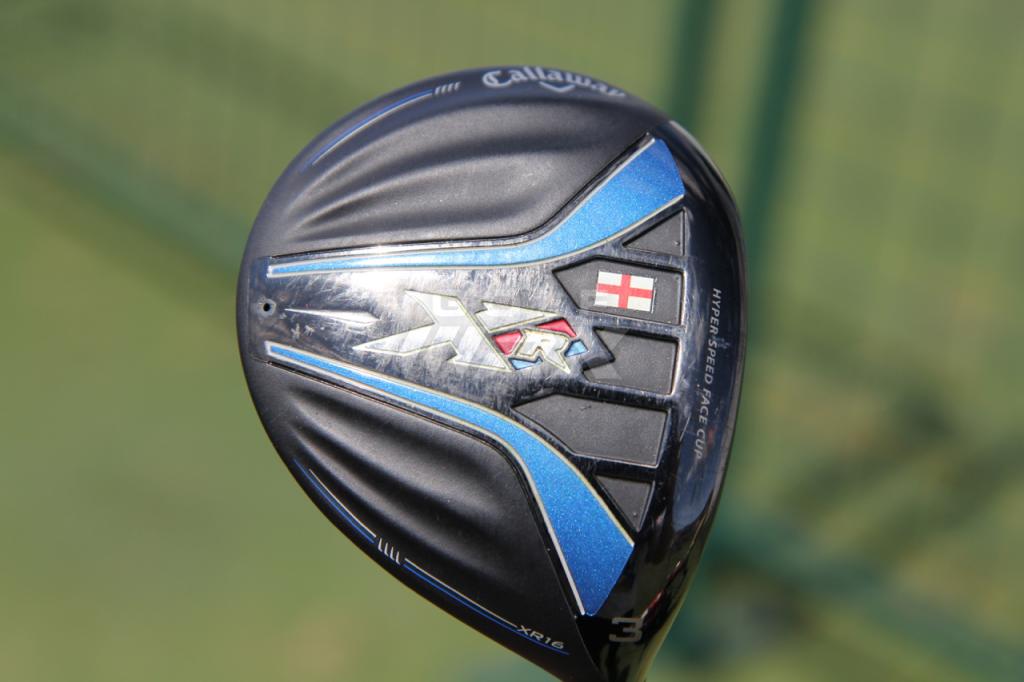

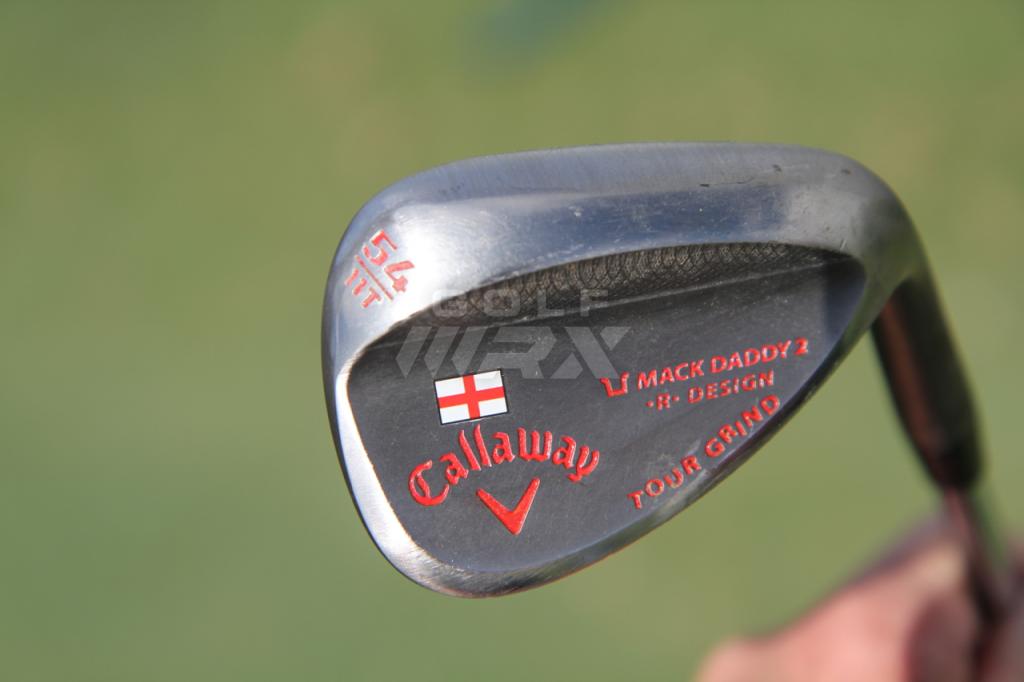
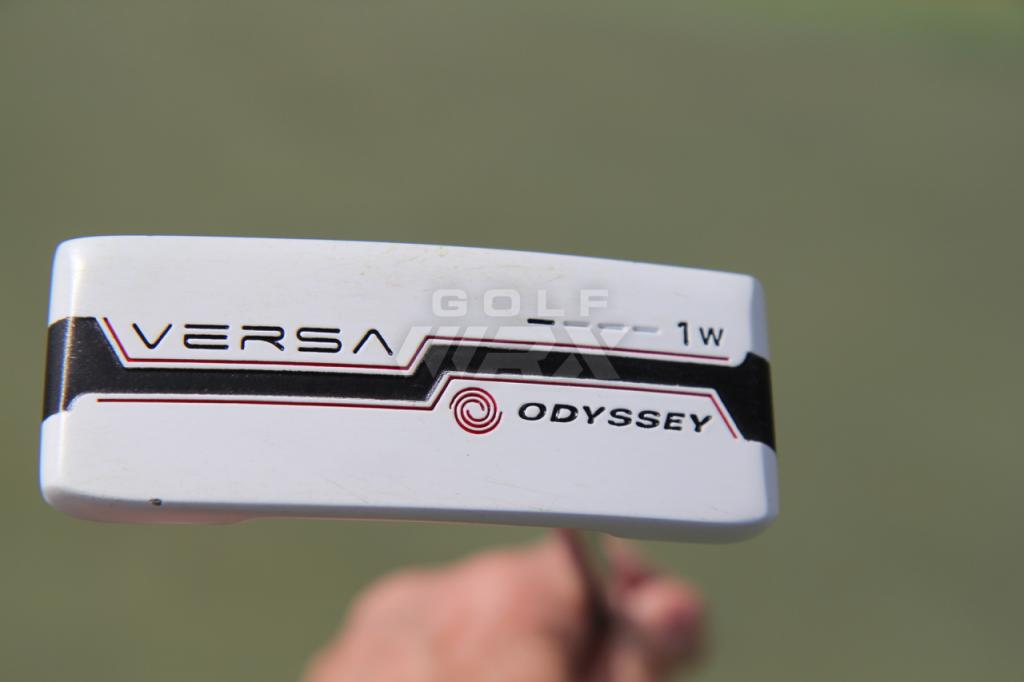














Bill.nickelsen
Jan 23, 2020 at 5:04 pm
Looks like the old Royal golf ball! Great down wind. Anxious to try it out!
Rich Douglas
Jan 21, 2020 at 2:26 pm
This is a press release with no critical thinking applied to what Callaway is selling. It might all be true, but you cannot be sure because there is no independent voice, no agency, in what is written.
Why no Triple-Track on the Chrome Soft? Again? Especially since they just offered up a bunch of Odyssey putters designed specifically for use with those markings? It doesn’t make sense.
Chris Ewalt
Jan 24, 2020 at 5:04 pm
They will be available In the triple track
Tenbuck
Jan 21, 2020 at 2:16 pm
From the KINGS of marketing, it only a ball Callaway only a ball.
Mark
Jan 21, 2020 at 7:07 am
No one in the golf industry, who writes about equipment, gulps down more corporate Kool Aid than does this Barath chappie.
If you are serious about equipment, he is an irrelevant read.
Manny
Jan 21, 2020 at 9:46 pm
Completely agree. As this is a new product release, I would prefer an in depth marketing piece straight from Callaway. Then, once the author has experience with the product, an actual opinionated review of the product.
This article (and most I’ve read from this author) tries to straddle both marketing / review while being neither.
Not worth it
Jan 21, 2020 at 6:52 am
Originally the ball was in the $35 dollar range. At that price it did change the market. Now at a list of $48 a dozen, why bother. Rather spend the money on a ProV.
334
Jan 21, 2020 at 5:01 am
Not a single line mentioning the off center scandal while it covers so much about solving the issue. Kind of obvious this is a paid adticle.
Will Dutton
Jan 21, 2020 at 5:08 am
was thinking the same thing
Doubt
Jan 21, 2020 at 6:35 am
Getting pretty sick of these. It’s always an obvious add, or someones opinions on the pro’s.
We really never get any true opinions on equipment, testing, or inside scoops.